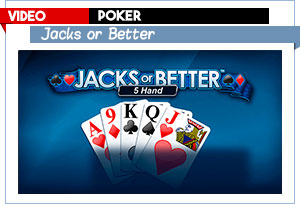What Video Poker Game Has The Best Odds
- What Video Poker Game Has The Best Odds
- Best Video Poker Game
- What Video Poker Game Has The Best Odds Without
I never play slot machines. If I want to play at a gambling machine, I usually stick with real money video poker.
True or False - The playing strategy for high variance video poker games is more complex than that of games with a lower variance. True or False - Most people are very good judges of their tolerance for risk. True or False - Multiple play video poker games use the same playing strategy as a single play game. Video poker made its entry to the casino in the seventies; and is today one of the most popular forms of gambling. For the player who likes a game of skill, a low house edge, the possibility of large wins, and the anonymity of playing alone there is nothing else that can compare to video poker. The rules of video poker are simple; you play 1 to.
I have various reasons for this, but one of the most important reasons is because the odds of winning at video poker are far better than the odds of winning at a slot machine game.
How do you know what the odds of winning on a video poker machine are? I can offer some guidance in this post. To learn more, keep reading below.
Probability and Video Poker
Before you can calculate the probability of winning at video poker, you need to understand some of the basics of probability math.
The first and most important thing to understand is that an event’s probability is just a number between 0 and 1. The closer that number gets to 1, the likelier it is to happen.
By definition, something with a probability of 0 will never happen. Also by definition, something with a probability of 1 will always happen.
And if you add the probability of something happening with the probability of it not happening, you’ll also always get a total of 1.
That probability can be expressed in multiple formats, but the most useful formats are odds and percentages.
Everyone knows what a percentage is. It’s just a measure of how many times out of 100 you expect something to happen. If something happens 20% of the time, that means it happens 20 times out of every 100.
Odds, on the other hand, can measure probability. But they also measure the amount a bet pays out. Something with a 20% probability of happening has odds of 4 to 1. You have four ways it can happen and one way that it can’t.
Like other fractions, odds can be reduced. To get to that 4 to 1, we just converted 20% into 20/100, which reduces down to 1/5. That means it happens 1 out of 5 times.
Gambling Machines Measure Their Odds in Terms of Payback Percentage
When you’re dealing with a slot machine, you have a variety of symbols on each reel, each of which comes up a certain percentage of the time. You don’t have any way of estimating how often that symbol will show up, but the slot machine manufacturer knows.
When they take all the possible combinations and their percentages of coming up, they balance that against the payout for each of those combinations to create a profitable game for themselves.
Let’s say you have a really simple slot machine game with four potential winning combinations:
- You’ll get three bars 25% of the time and win even money.
- You’ll get three cherries 10% of the time and win 2 for 1.
- You’ll get three plums 5% of the time and win 3 for 1.
- You’ll get three pumpkins 1% of the time and win 5 for 1.

It’s easy to calculate the expected return (another phrase for “payback percentage”) for a game like this.
You start by calculating the expected value for each of the possible prizes. You just multiply the probability of winning by the amount you’ll win.
- 25% x 1 unit = 25%
- 10% x 2 units = 20%
- 5% x 3 units = 15%
- 1% x 5 units = 5%
Add those up, and you have the payback percentage for the game:
Over time, on average, you’ll get back 65 cents for every dollar you bet on that slot machine game.
In the short run, over an hour or so, you might win some money or lose more than that. But over time, your average should get close to this.
The Advantage of Video Poker Over Slot Machines
My problem with slot machines is that they’re the only game in the casino where you don’t know what the odds of winning are.
When I’m rolling a pair of dice, I can calculate the probability of winning. When I’m playing blackjack, I can estimate the odds of winning, because I know what the odds of getting specific cards are. When I’m playing roulette, I know how many red and black outcomes are on the wheel.
But since slot machines are run by a random number generator, I have no way of knowing what the probability of getting three cherries in a row is. It could be 8 to 1, 16 to 1, or 1000 to 1.
All I know for sure is that the odds of getting each payout are lower than the payout odds for that combination.
Video poker, on the other hand, is based on a deck of 52 cards. I know how many of each card is in the deck, so I can estimate the odds of getting specific combinations.

When you combine that knowledge of probability with knowledge of the payouts for those combinations, you wind up with the payback percentage of the game.
Jacks or Better Is the Original Video Poker Game
For the most part, all video poker games are just variations of Jacks or Better. It’s a simple enough game. You bet between 1 and 5 coins and get dealt a virtual five-card poker hand. You then decide which of those five cards you want to discard and which you want to keep. The machine deals you replacement cards and pays off your bet based on the poker hand you wind up with.
The best possible hand is a royal flush, which pays off at 800 for 1 odds if you bet five coins. If you’ve bet fewer coins than that, it only pays off at 200 for 1 or 250 for 1, depending on the machine.
So, you should always bet the full five coins to take advantage of that higher payout. If you play with something approaching optimal strategy, you should get a winning hand about 45% of the time on a Jacks or Better video poker game.
That’s the short answer to “what are the odds of winning on a video poker machine,” by the way. It’s roughly 45%. But that’s not going deep enough. You should know more about it than that.
Since we know the probability of winding up with various combinations of cards, we can calculate the overall payback percentage for such a game. You just do the same calculations we did for the simple slot machine above.
You multiply the probability of winning each prize by the amount of that prize and add them all together to get your payback percentage.
- A pair of jacks or better comes up about 21% of the time and pays off at 1 for 1.
- Two pair comes up about 13% of the time and pays off at 2 for 1.
- Three of a kind comes up about 7%of the time and pays off at 3 for 1.
- A straight comes up about 1% of the time and pays off at 4 for 1.
- A flush comes up about 1% of the time and pays off at 6 for 1.
- A full house comes up about 1% of the time and pays off at 9 for 1.
- A four of a kind comes up about 0.2% of the time and pays off at 25 for 1.
- A straight flush comes up about 0.01% of the time and pays off at 50 for 1.
- A royal flush comes up about 0.002% of the time and pays off at 800 for 1.

Multiply those and add them all up, and you have a game with a payback percentage of about 99.5%.
But Not All Video Poker Games Are the Same
Of course, Jacks or Better is just one variation of video poker. You can find dozens of different video poker variations on the market. All of them are based on Jacks or Better, though.
With some of these variations, the big difference is the inclusion of wild cards. In Joker Poker, the game uses a 53-card deck with a joker that acts as a wild card. In Deuces Wild, the deck has the same 52 cards in it, but the twos are wild cards.
With games like these, the payouts for the various hands change based on how much more likely the higher hands are to appear.
But that’s not the only way casinos and game manufacturers vary their video poker games. They also change the payouts on various hands.
If they change those payouts enough, you get a different game. Bonus Poker, Double Bonus Poker, and Bonus Bonus Poker are basically variations of Jacks or Better that provide higher payouts for four of a kind hands of a certain ranking.
But even within a single narrow band of a game, like Jacks or Better, you can find multiple pay tables available. The differences in these pay tables change the payback percentage for the game.
With Jacks or Better, the pay table I used as an example is the best possible example. When manufacturers want to create a Jacks or Better game with better odds for the house, they have smaller payouts for the full house and the flush. Changing those payouts from 9 and 6 to 8 and 5 reduces the payback percentage from 99.5% to 97%.
Your Decisions Matter
One of the other fun things I like about video poker is that your decisions have an effect on the outcome. These payback percentages that I mention assume that you’re playing your cards optimally. In other words, you’re making the right decisions about which cards to keep and which ones to throw away.

Imagine what your payout would be if you broke a pair every time you got one. Can you see why that would hurt your results in the long run?
What Video Poker Game Has The Best Odds
Conclusion
Best Video Poker Game
What are the odds of winning at video poker? On a single hand, on most games, it’s about 45%. But that only tells a small part of the story.
What Video Poker Game Has The Best Odds Without
Video poker offers a nearly endless amount of complexity when it comes to payback percentages and correct strategy. It’s a game worth learning to play.